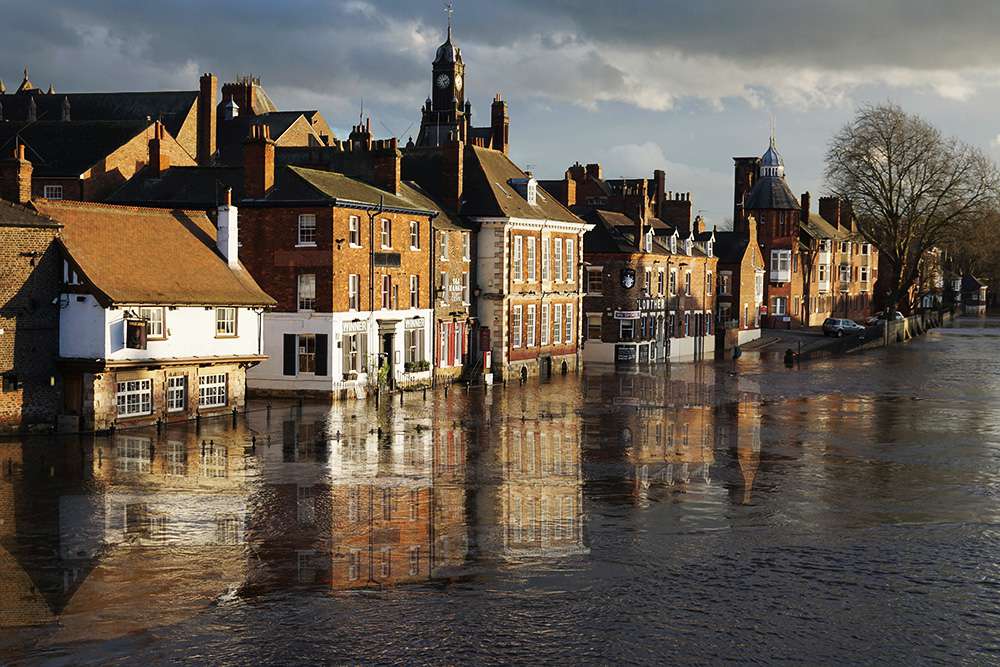Construction in areas prone to flooding presents some very different considerations than in other developments. Availability of flood insurance and varied best construction practices are the main challenges in these locations.
Lush vegetative growth, fertile soils, million dollar views, cheaper land, and all the fishing anyone could ask for. Just some of the attractions perceived by those who want to build near rivers, lakes, and streams. But in some low lying areas this results in structures being placed in Special Flood Hazard Areas (SFHAs), which is defined as an area of land that would be inundated by a flood having a 1% chance of occurring in any given year (previously referred to as the base flood or 100-year flood).
These areas can include beach fronts, flood plains, or worse, areas prone to flash flooding. How are these areas located, and why is construction even permitted in these places?
Specific SFHA locations are determined by maps created and maintained by FEMA (Federal Emergency Management Agency). These are the Flood Hazard Boundary Maps (FHBMs), Flood Insurance Rate Maps (FlRMs), and Flood Boundary and Floodway Maps (FBFMs). However, changing weather patterns, erosion, and development can affect floodplain boundaries so these maps are constantly being updated. The undertaking has been huge; currently over 100,000 individual community FIRMs have been published and become available online.
Up until the late 1960’s, construction and development in flood prone areas was a risky enterprise, as very little insurance was available to cover losses due to flooding. In 1968, Congress established the National Flood Insurance Program (NFIP). The purpose of this program was to give property owners the opportunity to purchase flood insurance protection, and to encourage communities to implement measures to minimize risk of floods and subsequent damages. While community participation in the program is voluntary, many benefits such as federal financial assistance and special mortgage programs are not available to those that do not.
Currently over 20,000 communities in the U.S. have elected to participate. One of the consequences of implementing the NFIP was to make construction in flood prone areas less risky, even attractive. In short, construction is permitted in SFHAs as a compromise between building restrictions to minimize loss of life and property damage and the economic benefit of development these areas.
Currently SFHA development may take place provided it complies with local floodplain management ordinances and minimum Federal requirements. By limiting development and utilizing flood resistant construction practices the high costs associated with flood disasters can be greatly reduced, by up to 80% by some estimates.
Limiting development in SFHAs is usually accomplished by the zoning restrictions and permitting processes at the local government level. These restrict the amount and type of construction for new structures, remodeling projects, repairs, additions, fences, and decks. They also may limit or even forbid grading and filling activities, driveways, pools, and other construction that may not normally need a permit outside of an SFHA.
There may even be restrictions on how much a structure can be improved or reconstructed if damaged by other processes such as fire or earthquake. Such work can be determined to be a Substantial Improvement and the cost of reconstruction limited to a percentage of the market value before damages occurred.
Actual construction practices in and around SFHAs are specified by each community due to differing risk factors. Raising construction onto pilings may be acceptable in one area, but banned in another due to piling subsidence when supporting soils are inundated. Requiring the lowest floor elevation in a structure to be higher than the Base Flood Elevation (the computed elevation to which floodwater is anticipated to rise during the base flood) level is common, but impractical in some areas if the subsequent elevation is too high.
Limiting internal to external grading drops for crawlspaces is another example of differing construction practices. With so many possible variations in best construction practice for SFHAs, it would be wise to consult local officials, insurance companies, and to otherwise do some research prior to considering development in these areas.


